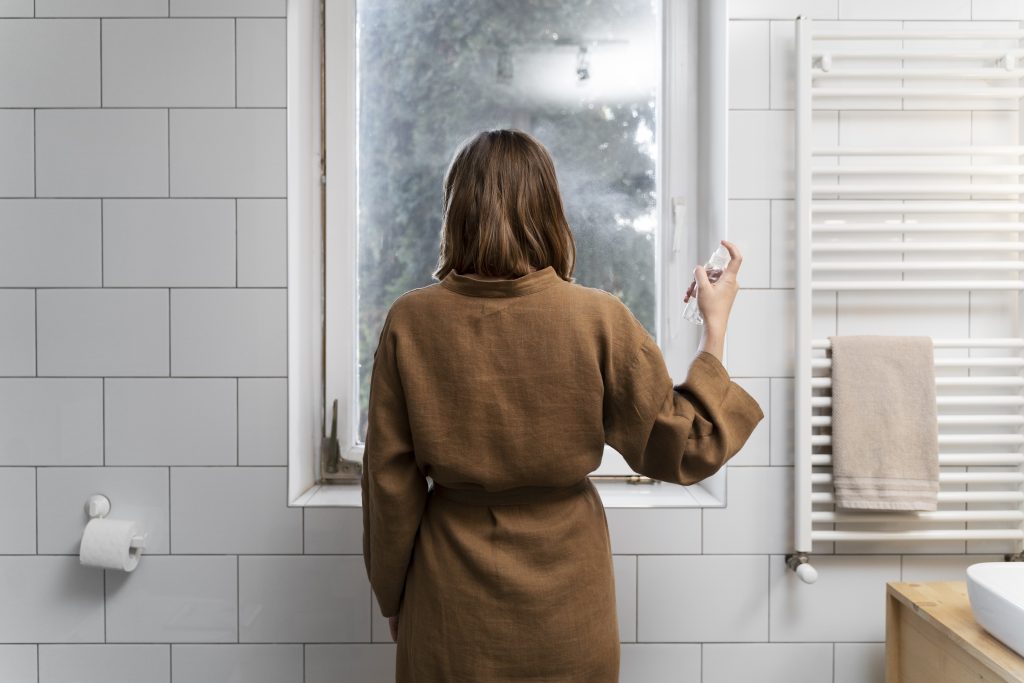It’s not the most pleasant experience, is it? A window in the bathroom serves a crucial purpose beyond just letting in natural light and providing a view. It’s all about ventilation. But, does a bathroom really need a window? Well, in this discussion, we will explore the reasons why a window in the bathroom is essential and the alternatives for ventilating a windowless bathroom. So, if you’re curious to know how to maintain a healthy and comfortable bathroom environment, keep reading.
Importance of Bathroom Ventilation
Proper bathroom ventilation is crucial for maintaining a healthy and comfortable environment. The importance of airflow cannot be overstated, as it plays a significant role in preventing health risks and maintaining the overall condition of the bathroom. There are several pros and cons to consider when it comes to bathroom ventilation systems.
One of the most common methods for DIY ventilation is installing an exhaust fan. This system circulates fresh air while removing foul-smelling air, controlling odors, and regulating the temperature in the bathroom. It also helps to prevent moisture buildup, which can lead to mold growth and damage to the bathroom.
If installing an exhaust fan is not possible, there are other options to consider. Manual moisture reduction, such as wiping down walls and floors after each shower, can effectively reduce moisture levels and prevent mold and mildew growth. Leaving bathroom doors open and opening shower enclosure doors allow moisture to escape and improve overall air circulation. Using a dehumidifier can also help reduce moisture levels in the bathroom.
Methods for Ventilating a Bathroom Without Windows
If you’re looking for effective ways to ventilate your bathroom without windows, there are several methods to consider. One option is installing an exhaust fan. This will circulate fresh air and remove foul-smelling air, regulate the temperature, and prevent moisture buildup. Another method is manual moisture reduction, which involves wiping down walls and floors after each shower to remove dampness and reduce moisture levels. This helps prevent the growth of mold and mildew. Using a dehumidifier is also an effective way to reduce moisture levels in the bathroom. It absorbs water from the air and releases excess vapor, helping to maintain a dry and comfortable environment. To prevent moisture buildup, avoid towel drying in the bathroom. Hanging towels in an open space outside the bathroom prevents dampness and musty smells. Additionally, adding plants to your bathroom can help absorb moisture, release oxygen, and filter out toxins. Choose plants that thrive in low-light environments. By implementing these methods, you can effectively ventilate your bathroom without windows and maintain a clean and comfortable space.
FAQs About Ventilating a Bathroom Without Windows
Have questions about ventilating a bathroom without windows? Here are some FAQs to help you out.
| FAQ | Answer |
|---|---|
| How can I prevent mold growth in a windowless bathroom? | Preventing mold growth in a windowless bathroom can be achieved through manual moisture reduction techniques. Wipe down walls and floors after each shower to remove dampness and reduce moisture levels. This helps to prevent the growth of mold and mildew. |
| What are the benefits of using a dehumidifier in a windowless bathroom? | Using a dehumidifier in a windowless bathroom can effectively reduce moisture levels. It absorbs water from the air and releases excess vapor, helping to maintain a dry and comfortable bathroom environment. Dehumidifiers are available in various shapes and sizes and are portable and easy to move around. |
| How can I improve bathroom hygiene without a window? | Without a window, you can improve bathroom hygiene by using an exhaust fan or manual moisture reduction techniques. Wipe down surfaces after each shower, hang towels outside the bathroom to avoid moisture buildup, and consider adding plants that thrive in low-light environments to absorb moisture and purify the air. |
| What plants can I use in a windowless bathroom? | In a low-light environment, you can choose plants such as snake plants, pothos, or ZZ plants. These plants can thrive with minimal sunlight and help to absorb moisture, release oxygen, and filter out toxins and chemicals, enhancing the overall aesthetics and air quality of your bathroom. |
Benefits of Installing a Window in Your Bathroom
Installing a window in your bathroom offers a range of benefits that enhance both the functionality and aesthetic appeal of the space. First and foremost, a window improves airflow by allowing fresh air to enter and circulate in the bathroom. This helps to reduce moisture levels and prevent the growth of mold and mildew. Additionally, a window in the bathroom enhances the overall aesthetics by providing natural light, making the space feel brighter and more inviting. Moreover, windows contribute to energy efficiency by reducing the need for artificial lighting during the day. They also serve as cooling solutions, allowing for cross ventilation and bringing in cooler air on hot days. Another advantage of installing a window is the potential increase in resale value. Properties with windows in their bathrooms tend to have higher resale value because buyers prefer homes with ample natural light and proper ventilation. Overall, installing a window in your bathroom not only improves airflow and enhances aesthetics but also offers energy efficiency, cooling solutions, and potential resale value benefits.
City Codes and Laws for Windows in Bathrooms
Now let’s explore the regulations and guidelines regarding the installation of windows in bathrooms, as outlined by various city codes and laws:
- Minimum window area: Some city codes specify a minimum window area that must be met in order to provide adequate natural light and ventilation in the bathroom.
- Operability requirements: City codes may require windows in bathrooms to be operable, meaning they can be opened and closed. This allows for proper airflow and ventilation.
- Impact resistant windows and tempered glass: In certain areas prone to severe weather conditions, city codes may require the use of impact resistant windows to ensure the safety of occupants. Additionally, tempered glass windows may be required to prevent injuries in case of breakage.
It’s important to note that in some cases, city codes may allow for alternative ventilation systems, such as exhaust fans, to meet the ventilation requirements instead of windows. These systems must meet specific requirements outlined by the city codes.
Natural Light
Windows in the bathroom provide additional natural light, making the space feel more spacious and inviting. Natural light has several benefits for the bathroom. Firstly, it saves on energy costs by reducing the need for artificial lighting during the day. This can lead to significant savings over time. Additionally, sunlight has positive effects on mood and overall well-being, creating a more pleasant atmosphere in the bathroom. Natural light also enhances the aesthetic appeal of the space, making it more visually appealing. However, there are some drawbacks to consider. A bathroom without windows may limit the ability to bring in cooler air on hot days, making the space uncomfortable and stuffy. Furthermore, windows in the bathroom can increase the resale value of a property, as buyers prefer homes with ample natural light and proper ventilation. When considering window alternatives, vents can effectively solve the problem of not having a window. Vents provide ventilation, but they may lack natural lighting. Ultimately, the decision between windows and vents depends on personal preference, building codes, and budget constraints.
No Circulation on Hot Days
On hot days, a windowless bathroom can become uncomfortable and stuffy due to the lack of air circulation. Without proper ventilation, the hot air becomes trapped, making it difficult to cool down. Here are three alternative methods to improve air circulation and combat the discomfort of hot weather in a windowless bathroom:
- Install an Exhaust Fan: An exhaust fan is a popular choice for windowless bathrooms. It circulates fresh air and removes foul-smelling air, regulating the temperature and preventing moisture buildup. Using the exhaust fan every time you use the bathroom will improve overall comfort and prevent the growth of mold and mildew.
- Use a Portable Fan: A portable fan can be placed in the bathroom to create a breeze and promote air circulation. Position the fan near a doorway or window in the house to bring in cooler air from other areas. This simple solution helps to alleviate the stuffiness and provides relief on hot days.
- Utilize Air Purifiers: Air purifiers not only filter out allergens and pollutants but also help to improve air circulation. They can be placed in the bathroom to remove stale air and replace it with fresh, clean air. Additionally, some air purifiers come with cooling features, providing additional relief in hot weather.






